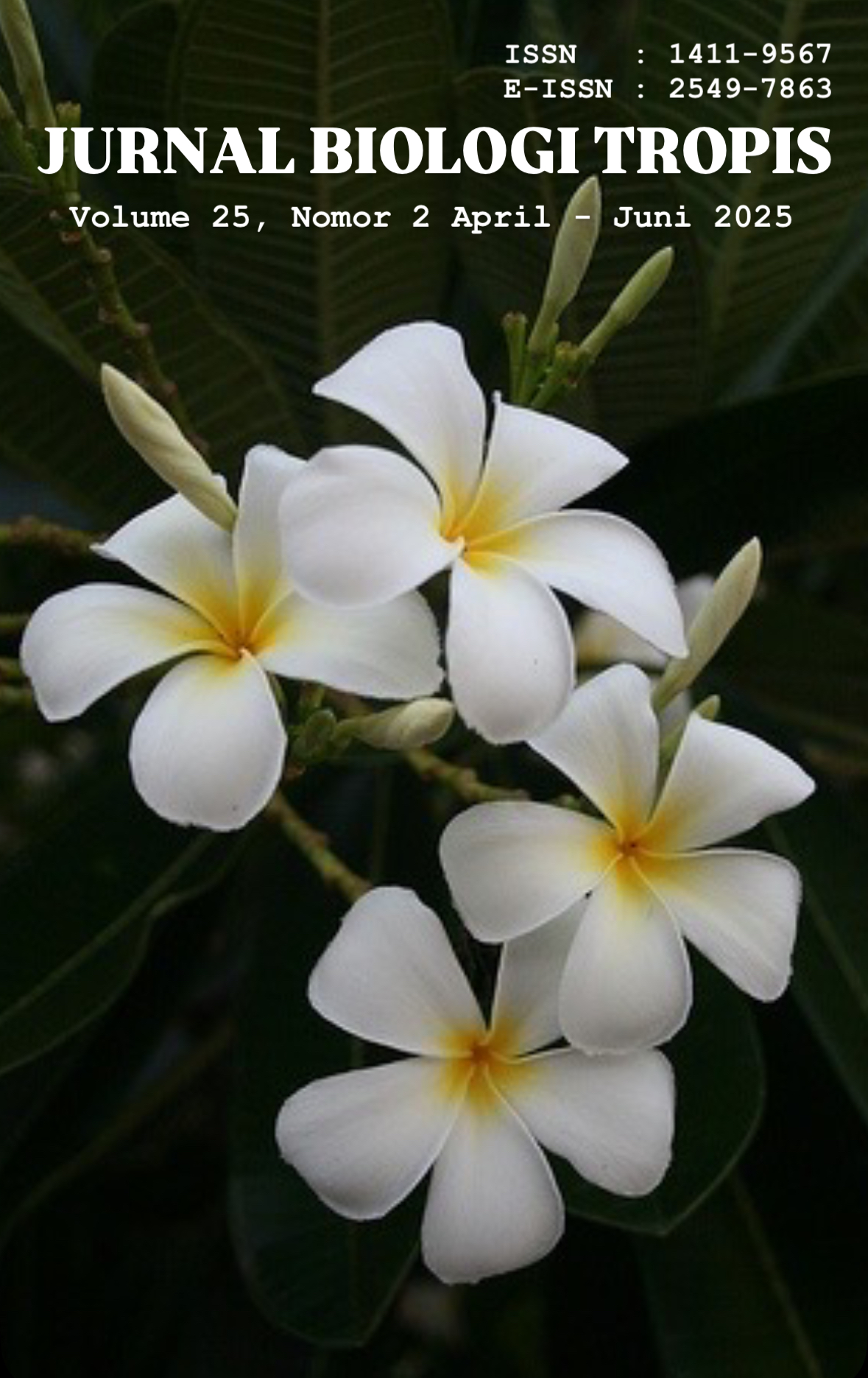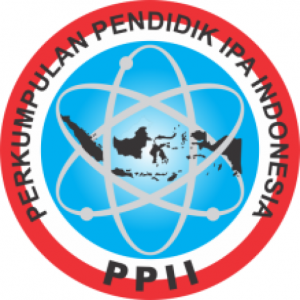The Application of Liquid Organic Fertilizer Increasing the Productivity of Pakchoy Plants (Brassica rapa L.) in Soil with Low Nutrient Content
Authors
Dyon Rahman Isnainy , Paranita Asnur , Muhammad Ridha Alfarabi Istiqlal , Ummu KalsumDOI:
10.29303/jbt.v25i2.8972Published:
2025-05-25Issue:
Vol. 25 No. 2 (2025): April-JuniKeywords:
Catfish pond waste, liquid organic fertilizer, pakcoy, plant growth, organic farming.Articles
Downloads
How to Cite
Downloads
Metrics
Abstract
Organic farming plays a very important role in maintaining environmental balance because it can reduce the use of harmful synthetic chemicals. This LOF is considered capable of enhancing soil fertility and supporting plant growth, while simultaneously reducing waste from the aquaculture sector. This study aims to evaluate the effect of liquid organic fertilizer (LOF) from catfish pond wastewater on the productivity of pakcoy (Brassica rapa L.) plants grown in soil with low nutrient content. The research was conducted in the experimental field of Universitas Gunadarma, East Jakarta, using 18 combinations of POC treatments with various concentrations and five varieties of pakcoy. Data were analyzed using the F-test to determine the overall treatment effect, followed by the Duncan Multiple Range Test (DMRT) at a 5% significance level to compare between treatments. The research results show that the application of POC from catfish pond wastewater has a positive effect on the growth of pakcoy compared to the control. A POC concentration of 0.75 ml/L yielded the best results in most parameters, including plant height, number of leaves, as well as leaf length and width. Although not all treatment combinations yielded significant results, the use of POC generally shows great potential in increasing the productivity of pakcoy plants. POC from catfish pond wastewater is not only effective as an organic fertilizer but also supports sustainable agriculture by reducing the negative impact of aquaculture waste on the environment. This research recommends POC as an environmentally friendly fertilizer alternative to improve agricultural yields, especially in areas with low nutrient content, through gradual soil quality improvement.
References
Aisyah, S. (2013). Pengaruh Pemberian Pupuk Hayati Terhadap Produksi Tanaman Cabai. Majalah Ilmiah Politeknik Mandiri Bina Prestas, 2(2), 133–137. https://www.google.com/url?sa=t&source=web&rct=j&opi=89978449&url=https://www.politeknikmbp.ac.id/direktori/category/34-volume-2-2.html%3Fdownload%3D42:volume-2-2-7&ved=2ahUKEwjdnaL7j76LAxVtzjgGHULlL-EQFnoECBQQAQ&usg=AOvVaw2wkzhxt7RtqeWLkqYoLBml
Cheng-wei, L., Sung, Y., Chen, B.-C., & Lai, H.-Y. (2014). Effects of Nitrogen Fertilizers on the Growth and Nitrate Content of Lettuce (Lactuca Sativa L.). International Journal of Environmental Research and Public Health. https://doi.org/10.3390/ijerph110404427
Damayanti, N. S., Widjajanto, D. W., & Sutarno, S. (2019). Pertumbuhan dan produksi tanaman sawi Pakcoy (Brassica rapa l.) akibat dibudidayakan pada berbagai media tanam dan dosis pupuk organik. Journal of Agro Complex, 3(3), 142. https://doi.org/10.14710/joac.3.3.142-150
Dicks, L. V, Rose, D. C., Ang, F., Aston, S., E. Birch, A. N., Boatman, N. D., Bowles, E. L., Chadwick, D. R., Dinsdale, A., Durham, S. A., Elliott, J. E., Firbank, L., Humphreys, S., Jarvis, P., Jones, D. C., Kindred, D. R., Knight, S., F. Lee, M. R., Leifert, C., … Sutherland, W. J. (2018). What Agricultural Practices Are Most Likely to Deliver “Sustainable Intensification” in the UK? Food and Energy Security. https://doi.org/10.1002/fes3.148
Djafar, T. A., Asil Barus, A. B., & Syukri, S. (2013). Respon Pertumbuhan Dan Produksi Sawi ( Brassica Juncea L ) Terhadap Pemberian Urine Kelinci Dan Pupuk Guano. Jurnal Agroekoteknologi Universitas Sumatera Utara, 1(3). https://doi.org/10.32734/jaet.v1i3.2988
Elinda, F., Yora, M., Renfiyeni, Hendri, J., Meyuliana, A., & Wulandari, A. (2023). The Response of Growth and Production in Cauliflower With Different Doses of Paitan Liquid Organic Fertilizer. Iop Conference Series Earth and Environmental Science. https://doi.org/10.1088/1755-1315/1160/1/012015
Erawan, D., Yani, W. O., & Bahrun, A. (2013). Pertumbuhan dan hasil tanaman sawi (Brassica juncea L.) pada berbagai dosis pupuk urea. Jurnal Agroteknos, 3(1), 19–25.
Fauzi, A. R., Casdi, & Warid. (2019). Response of Pakcoy (Brassica Rapa L.) to the Treatment of Liquid Organic Fertilizer of Fisheries Waste. Jurnal Hortikultura Indonesia. https://doi.org/10.29244/jhi.10.2.94-101
Firmansyah, I., Syakir, M., & Lukman, L. (2017). Pengaruh Kombinasi Dosis Pupuk N, P, Dan K Terhadap Pertumbuhan Dan Hasil Tanaman Terung (Solanum Melongena L.) [the Influence of Dose Combination Fertilizer N, P, and K on Growth and Yield of Eggplant Crops (Solanum Melongena L.)]. Jurnal Hortikultura, 27(1), 69–78. https://doi.org/10.21082/jhort.v27n1.2017.p69-78
Haryanta, D., Sa’adah, T. T., Thohiron, M., Indarwati, I., & Permatasari, D. F. (2022). Aplikasi Pupuk Organik Cair Dari Limbah Organik Perkotaan Pada Tanaman Bawang Merah (Allium Ascalonicum L.). Jurnal Pertanian Terpadu. https://doi.org/10.36084/jpt..v10i1.403
Himayana, A. T. S., & Aini, N. (2018). Pengaruh Pemberian Air Limbah Cucian Beras Terhadap Pertumbuhan dan Hasil Tanaman Pakcoy (Brassica rapa var. chinensis). Jurnal Produksi Tanaman, 6(6), 1180–1188.
Khusnul, H. K. (2018). Pengaruh Pupuk Tablet Urin Sapi Pada Pertumbuhan Dan Hasil Tanaman Pakcoy (Brassica Rapa L.). http://repository.ub.ac.id/id/eprint/161898/
Lestari, A., Robbia, A. Z., Patech, L. R., & Syukur, A. (2021). Optimalisasi Pemanfaatan Limbah Rumah Tangga Sebagai Bahan Pupuk Organik Cair Untuk Menumbuhkan Sikap Dan Perilaku Peduli Lingkungan Pada Siswa MTs. Haudhul Ulum Gegutu Telaga. Jurnal Pengabdian Magister Pendidikan Ipa. https://doi.org/10.29303/jpmpi.v4i2.656
Mardhiah, A., Putri, N. O., Apriliani, D., & Handayani, L. (2022). Peningkatan Nilai Tambah Kulit Ikan Tuna Sebagai Bahan Baku Pupuk Organik Cair. Jurnal Pascapanen Dan Bioteknologi Kelautan Dan Perikanan. https://doi.org/10.15578/jpbkp.v17i2.861
Martínez‐Alcántara, B., Martínez-Cuenca, M.-R., Bermejo, A., Legaz, F., & Quiñones, A. (2016). Liquid Organic Fertilizers for Sustainable Agriculture: Nutrient Uptake of Organic Versus Mineral Fertilizers in Citrus Trees. Plos One. https://doi.org/10.1371/journal.pone.0161619
Molloy, S. D., Pietrak, M., Bouchard, D. A., & Bricknell, I. (2011). Ingestion of Lepeophtheirus Salmonis by the Blue Mussel Mytilus Edulis. Aquaculture. https://doi.org/10.1016/j.aquaculture.2010.11.038
Ndiaye, N. A., Maiguizo-Diagne, H., Diadhiou, H. D., Ndiaye, W., Diedhiou, F., Cournac, L., Gaye, M., Fall, S., & Brehmer, P. (2019). Methanogenic and Fertilizing Potential of Aquaculture Waste: Towards Freshwater Farms Energy Self‐sufficiency in the Framework of Blue Growth. Reviews in Aquaculture. https://doi.org/10.1111/raq.12390
Novriani. (2014). Respon Tanaman Selada (Lactuca sativa L) Terhadap Pemberian Pupuk Organik Cair Asal Sampah Orgaik Pasar. Klorofil, 9(2), 57–61. https://jurnal.um-palembang.ac.id/klorofil/article/view/112
Pambudi, A., Noriko, N., & Sari, E. P. (2017). Isolasi Dan Karakterisasi Bakteri Tanah Sawah Di Kecamatan Medan Satria Dan Bekasi Utara, Kota Bekasi, Jawa Barat. Jurnal Al-Azhar Indonesia Seri Sains Dan Teknologi. https://doi.org/10.36722/sst.v3i4.233
Pamungkas, M. A., & Supijanto. (2017). Pengaruh Pemupukan Nitrogen Terhadap Tinggi dan Percabangan Tanaman Teh (Camelia Sinensis (L.) O. Kuntze) untuk Pembentukan Bidang Petik. Buletin Agronomi, 14(1), 55–64.
Perwtasari, B., Tripatmasari, M., & Wasonowati, C. (2012). Pengaruh Media Tanam Dan Nutrisi Terhadap Pertumbuhan Dan Hasil Tanaman Pakchoi ( Brassica juncea L.) Dengan Sistem Hidroponik. Agrovigor, 5(1), 14–25.
Prayogo, P., Agustono, A., Rahardja, B. S., & Amin, M. (2021). Growth Performance and Nutrient Composition of Mustard Green (Brassica Juncea) Cultured in Aquaponics Systems and Hydroponic System. Journal of Aquaculture and Fish Health. https://doi.org/10.20473/jafh.v10i3.26593
Raksun, A., Ilhamdi, M. L., Merta, I. W., & Mertha, I. G. (2021). The Effect of Vermicompost and NPK Fertilizer on Tomato (Solanum Lycopersicum) Growth. Jurnal Pijar Mipa. https://doi.org/10.29303/jpm.v16i5.2874
Rauf, A., Shepard, B. M., & Johnson, M. W. (2000). Leafminers in vegetables, ornamental plants and weeds in Indonesia: Surveys of host crops, species composition and parasitoids. International Journal of Pest Management, 46(4), 257–266. https://doi.org/10.1080/09670870050206028
Santoso, A., & Widyawati, N. (2020). Pengaruh Umur Bibit terhadap Pertumbuhan dan Hasil Pakcoy (Brassica rapa ssp. chinensis) pada Hidroponik NFT. Vegetalika, 9(3), 464. https://doi.org/10.22146/veg.52570
Sarido, L., & Junia. (2014). Uji Pertumbuhan Dan Hasil Tanaman Pakcoy (Brassica rapa L.) Dengan Pemberian Pupuk Organik Cair Pada System Hidroponik. Jurnal AGRIFOR, XVI(4), 97–98.
Sarno. (2009). Pengaruh Kombinasi NPK dan Pupuk Kandang terhadap Sifat Tanah dan Pertumbuhan serta Produksi Tanaman Caisim. Journal of Tropical Soils, 14(3), 211. https://doi.org/10.5400/jts.2009.v14i3.211-219
Siregar, P., Fauzi, & Suproadi. (2017). Pengaruh Pemberian Beberapa Sumber Bahan Organik Dan Masa Inkubasi Terhadap Beberapa Aspek Kimia Kesuburan Tanah Ultisol (The Effect of Giving Several Sources of Organic Material and Incubation Period on Some Chemical Aspects of Ultisol Soil Fertility). Jurnal Agroekoteknologi Universitas Sumatera Utara, 5(2), 256–264.
Siswanto, B. (2019). Sebaran Unsur Hara N, P, K Dan PH Dalam Tanah. Buana Sains, 18(2), 109. https://doi.org/10.33366/bs.v18i2.1184
Taofik, A., Hasani, S., Cahyaningtyas, A., & Taufik Qurrohman, B. F. (2020). Pemanfaatan Pupuk Organik Cair Paitan (Tithonia diversifolia) pada Berbagai Dosis dan Ragam Aplikasinya Terhadap Pertumbuhan Kailan (Brassica oleracea Var. Acephala). Jurnal Agroteknologi. https://doi.org/10.24014/ja.v11i1.7802
Taufika, R. (2011). Pengujian Beberapa Dosis Pupuk Organik Cair Terhadap Pertumbuhan Dan Hasil Tanaman Wortel (Daucus carota L .). Jurnal Tanaman Hortikultura, 1–10.
Tsani, M. K., Riniarti, M., Indriyanto, I., & Asmarahman, C. (2023). Pelatihan Pembuatan Mikroorganisme Lokal Dan Pemanfaatannya Sebagai Pupuk Organik Cair Di Kelompok Tani Hutan Sumber Agung. Jurnal Pengabdian Dan Pengembangan Masyarakat. https://doi.org/10.22146/jp2m.73349
Tuapattinaya, P., & Tutupoly, F. (2014). Pemberian Pupuk Kulit Pisang Raja (Musa sapientum) Terhadap Pertumbuhan Dan Produksi Tanaman Cabai Rawit (Capsicum frutescens L.). BIOPENDIX: Jurnal Biologi, Pendidikan Dan Terapan, 1(1), 13–21. https://doi.org/10.30598/biopendixvol1issue1page13-21
Valdhini, I. Y., & Aini, N. (2017). Pada Pertumbuhan Dan Hasil Tanaman Sawi Putih ( Brassica chinensis L . ) Secara Hidroponik. Plantropica Journal of Agricultural Science, 2(1), 39–46.
Wijaya, R. (2019). Pengaruh Konsentrasi GA3 dan Dosis Pupuk N Terhadap Pertumbuhan dan Hasil Tanaman Selada (Lactuca sativa L.). Median : Jurnal Ilmu Ilmu Eksakta, 10(1), 1–8. https://doi.org/10.33506/md.v10i1.366
Zahroh, F., Kusrinah, K., & Setyawati, S. M. (2018). Perbandingan Variasi Konsentrasi Pupuk Organik Cair Dari Limbah Ikan Terhadap Pertumbuhan Tanaman Cabai Merah (Capsicum Annum L.). Al-Hayat Journal of Biology and Applied Biology. https://doi.org/10.21580/ah.v1i1.2687
Zhang, Y., Bleeker, A., & Liu, J. (2015). Nutrient Discharge From China’s Aquaculture Industry and Associated Environmental Impacts. Environmental Research Letters. https://doi.org/10.1088/1748-9326/10/4/045002
License
Copyright (c) 2025 Dyon Rahman Isnainy, Paranita Asnur, Muhammad Ridha Alfarabi Istiqlal, Ummu Kalsum

This work is licensed under a Creative Commons Attribution 4.0 International License.

Jurnal Biologi Tropis is licensed under a Creative Commons Attribution 4.0 International License.
The copyright of the received article shall be assigned to the author as the owner of the paper. The intended copyright includes the right to publish the article in various forms (including reprints). The journal maintains the publishing rights to the published articles.
Authors are permitted to disseminate published articles by sharing the link/DOI of the article at the journal. Authors are allowed to use their articles for any legal purposes deemed necessary without written permission from the journal with an acknowledgment of initial publication to this journal.


























